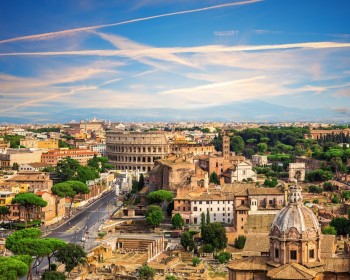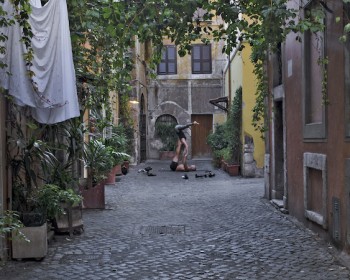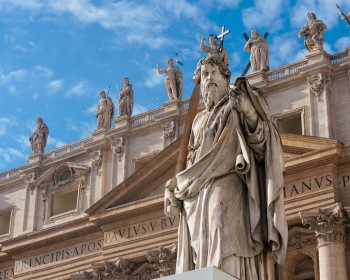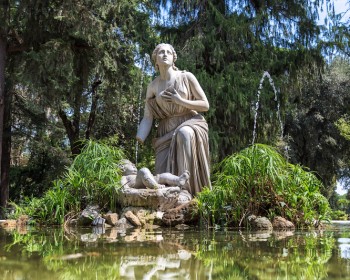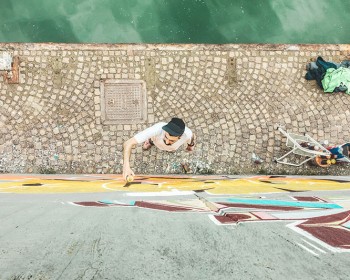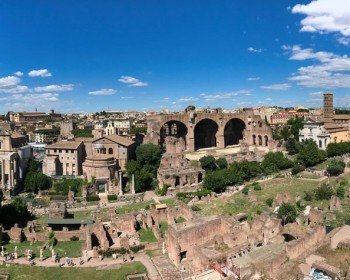While enjoying Rome from the top of these bridges, you will be left speechless by the magic of the Eternal City that, thanks to its stories and arts, will make you feel between myth, history and reality.
- Ponte Milvio
- Ponte della Musica
- Ponte Sant'Angelo
- Ponte Sisto
- Ponte Fabricio
- Ponte Rotto and Ponte Palatino
- Ponte Settimia Spizzichino
In ancient times Romans started to build bridges just once they had definitely settled on the left side of the Tiber river. Before that moment, due to defensive reasons, they thought it was inconvenient to have bridges, because enemies could use them to enter the city. In fact, even when they started to create some bridges, they were made of wood so that they could be easily destroyed in case of assault. When Romans felt their power was secure, they started to build stone bridges.
If you want to follow an alternative itinerary, below you can find a brief look at the best bridges, or well, those we think the most emotional.
1. Ponte Milvio
Probably made of wood at first, it was put into a stone bridge in 110 b.C. Ponte Milvio is one of the most ancient bridges in Rome and during the Roman Empire era it was an economically and strategically important place. In ancient times, it became famous for the struggle between the Emperors Constantine and Maxentius: the Battle of the Milvian Bridge, in 312. Between the 18th and 19th century, it was renovated by the architect Giuseppe Valadier who gave the bridge a neoclassical style, even though some years later Garibaldi had to blow it up to stop a French attack.
Romans define it as “the soak bridge”, because in case the Tiber overflows it is the first bridge to be submerged.
2. Ponte della Musica
It is one of the latest bridges carried out in Rome, de facto it was inaugurated in 2011. Even if it is made of steel and reinforced concrete, its very innovative design gives to the entire work the idea of something really light; the peculiarity of the bridge is the music you can appreciate while walking on it.
It is also known as Ponte della Musica – Armando Trovajoli after the roman composer died in 2013.
3. Ponte Sant’Angelo
Commissioned by Emperor Hadrian and realized in 134 a.D., it linked the city with his majestic mausoleum, and still does. What makes this bridge a marvellous work of art is the presence of statues representing 10 angels holding the symbols of the Passion and both the patrons of Rome, Saint Peter and Saint Paul. The statues of angels have been designed by Bernini, but they have been sculpted by his disciples by the will of Pope Clement IX.
Once the bridge was sadly renowned because, according to custom, condemned to death were shown on the bridge after their execution; the authority thought this could be a lesson for everybody.
Currently, while walking on the bridge, you will appreciate one of the most beautiful sights in the city!
4. Ponte Sisto
Built in 1400, in lieu of an ancient Roman bridge, it was created to connect Trastevere, the core of the city, with the other side of the river. Its name derives from the name of the Pope who wanted the construction of the bridge, Pope Sixtus VI, the one who commissioned the Sistine Chapel too.
The story goes that the restoration of the bridge as we know it, was financed by the prostitutes of Rome who paid taxes to the Curia.
Nowadays Ponte Sisto is one of the most popular bridges among tourists, because it offers amazing views and sunsets, and good smells and sounds will cheer your walk.
5. Ponte Fabricio
It is the oldest bridge in Rome still enduring exactly in its original state. Built-in 62 b.C it cuts through half of the Tiber river, from Campus Martius to Tiber Island, in the middle of the river itself –Ponte Cestio is the bridge at the other side of the island-.
People name the bridge “Ponte dei Quattro Capi” (literally “the bridge of the four heads”) as well, due to the two marble two-face shaped pillars on the parapet. The story goes that after they have been charged with the construction of the bridge by Pope Sixtus, due to inappropriate behaviour they had their head cut off and then, the Pope himself commissioned the construction of these pillars in their honour.
Let yourself feel all the fascination of this magic place!
Discover our ➡️ Archaeology and Baroque Rome in a Day Tour
6. Ponte Rotto and Ponte Palatino
Even if you cannot walk on this bridge you should go and see the ruins of the ancient Ponte Emilio, just in front of the Tiber Island. Probably Ponte Rotto, literally Borken Bridge, dates back to 3rd century b.C. but it was quite totally damaged with the disastrous flood in 1598. At the end of the 19th century, when the banks of the river have been reconstructed, a new bridge was built exactly behind Ponte Rotto: Ponte Palatino, also known as “the English bridge” because of the inverted direction of travel –Italians drive on the right!-.
7. Ponte Settimia Spizzichino
Inaugurated in 2012 it is dedicated to the only woman, in the Jewish ghetto of Rome, who survived at the deportation during Second World War.
The bridge links Garbatella district to the via Ostiensis and it is a railway bridge rather than one suspended on the Tiber river. Created with an intricate play of arches, beams and cables it is painted in white and stands out against the industrial suburb Ostiense district was once. At night it is enlightened with led lamps always changing their colour.
Whether you have already visited Rome or it is the first time you are planning your trip, it could be an original idea to arrange your itinerary following a sequence of bridges. Or these could be just the starting point of your walk through the main highlights of Rome.
After all, Rome is an amazing city from anywhere you admire it, and my goal is just to give you some hints to appreciate its magic!



